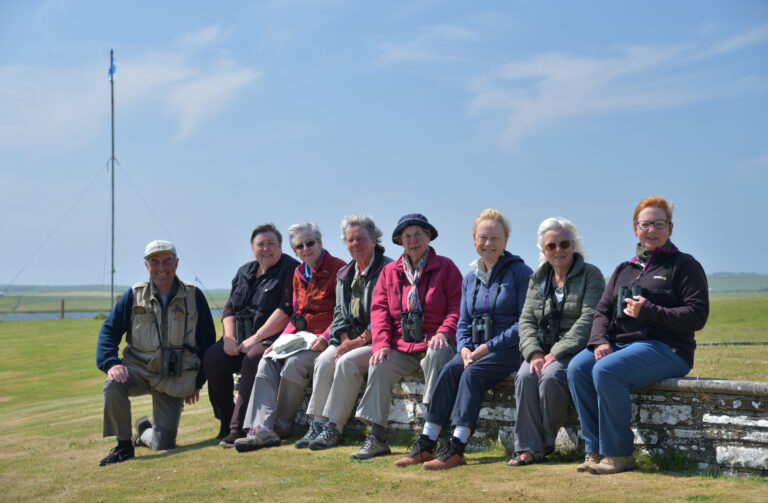
It’s glorious tee shirt weather for a silky-smooth ferry ride from Kirkwall to Westray. Once ashore, we take a turn off the ‘main road’ at a sign for Puffins! The track soon leads to a line of low cliffs adorned with a colourful display of wildflowers including Red Campion, white Sea Campion, blue Spring Quill, yellow Buttercups and Bird’s Foot Trefoil and pink Thrift, attracting several Red Admirals. As we stroll along the clifftops where numerous Fulmars and Puffins are nesting, we also spot a singing Rock Pipit, while a couple of Gannets take the plunge just offshore. Sitting on the clifftop adjacent to a low rock stack called the Castle O’ Burrian enjoying the tranquil scene, the sudden appearance of a pod of large pale grey Risso’s Dolphins with long dorsal fins is an added bonus.
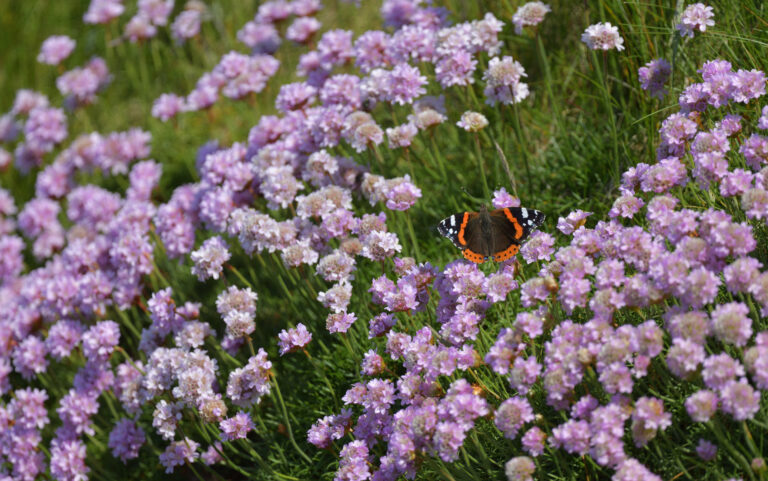
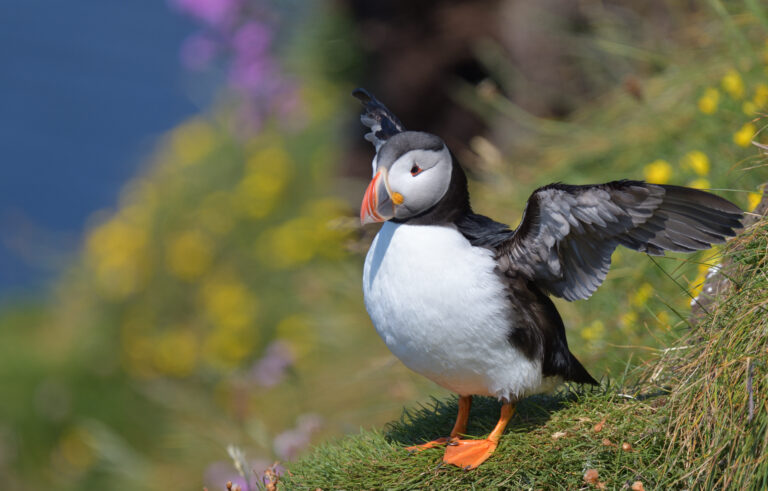
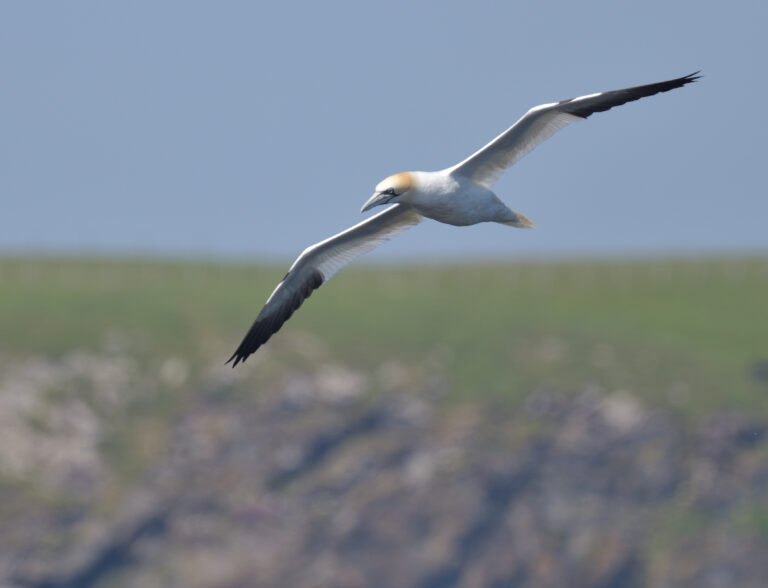
After a picnic lunch here, we check in to the Pierowall Hotel and then drive a short way up hill to Noup Head, where the sheer rock ledges are lined with hundreds of Guillemots, Kittiwakes and Gannets, with loads more on the calm sea down below. From our high vantage point, we also spot a few Razorbills and dozens of Grey Seals hauled out on the rocks exposed by the receding tide, plus plenty of Oystercatchers, which suddenly scatter as a Great Skua passes by. What a fabulous day that was, and only our first full day in Orkney.
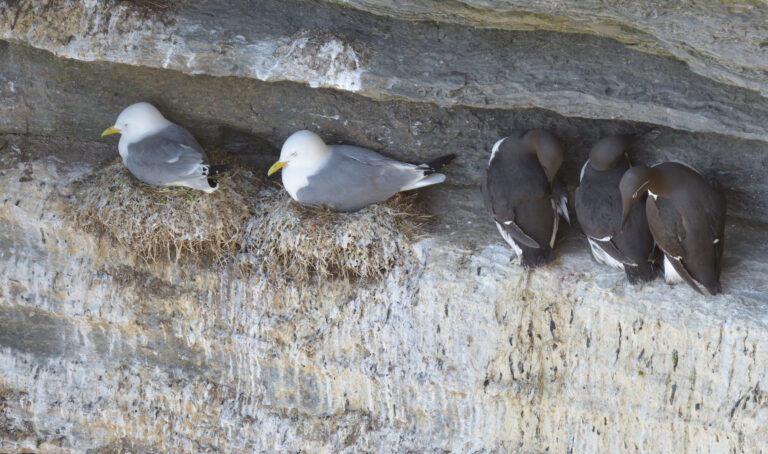
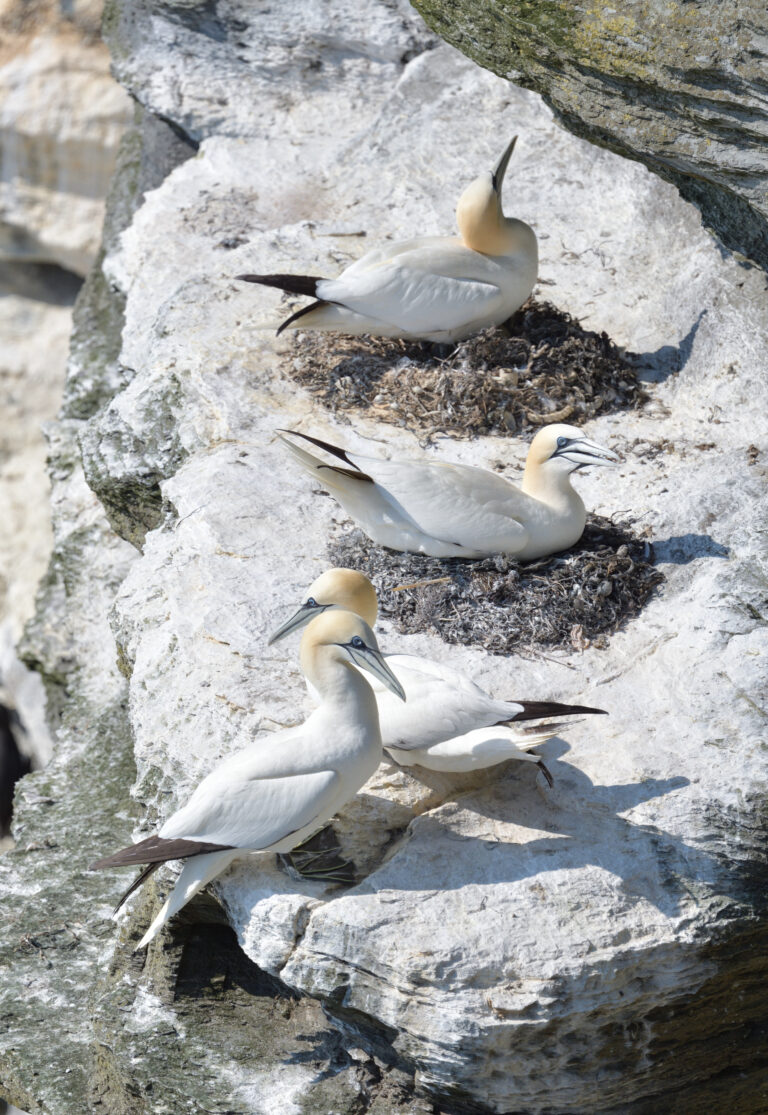
With sunrise at 4am, producing another ‘Mediterranean’ sky, it’s another day for shorts and tee shirts, ideal for an island hop across to lovely Papa Westray on the 9.15am ferry. While the ferry takes 25 minutes, we could have done it in under 2, on Loganair’s 1.7 mile flight from Westray, which is the shortest scheduled air service in the world! Once ashore we join the school run in the Community Bus, and after dropping off one child, the driver kindly gives us a short tour starting at the tiny twelfth century kirk of Saint Boniface, which is relatively modern by Orcadian standards. Next stop is the RSPB reserve at North Hill, where we alight and continue north across the maritime heath in search of the exceedingly rare and endemic Scottish Primrose, with tiny, yellow-centred purple flowers. Mission accomplished, we head south along the east coast, with several graceful Arctic Skuas and bulkier Great Skuas flying by. The colourful flora all around this lovely island includes deep purple Northern Marsh Orchids, rich yellow Marsh Marigolds and extensive beds of Yellow Irises while numerous Skylarks fill the air with their joyful songs and a Snipe performs its aerial ‘drumming’ display by climbing high and then diving earthward to make its tail feathers vibrate. After a visit to the only tearoom on the island, we return to the east coast, where one of the many swathes of Yellow Irises hides a calling Corncrake, which remains hidden even though only 15 yards away. Along the white sandy shore, we watch creches of cute and cuddly Eider ducklings, each with two mother ducks in attendance, bobbing on the clear blue water, while Ringed Plovers run up and down the beach and during our picnic lunch, looking out to sea, Sandwich Terns are an appropriate accompaniment.

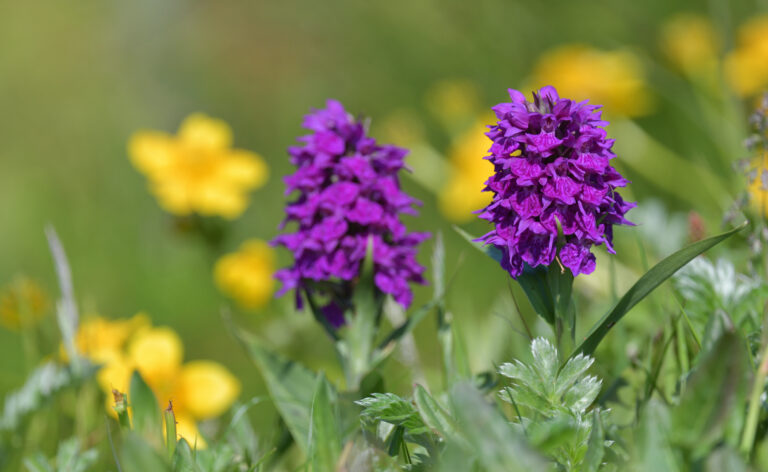
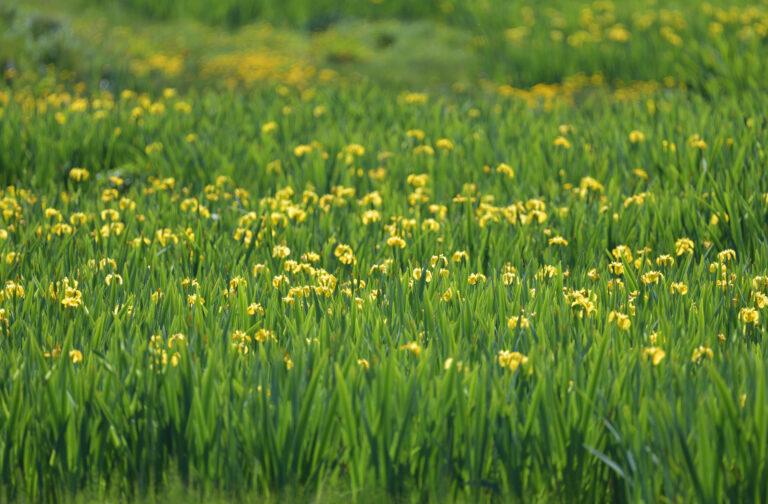

This afternoon our busy schedule includes visits to the Kelp Store Heritage Centre, the Bothy Museum and the nearby Knap of Howar where two incredibly well preserved stone age houses, thought to be the oldest in northern Europe, have overlooked the Papa Sound for almost 6000 years! Inside the neatly laid dry stone walls the house contents still have well preserved fireplaces, shelves and grinding stones! Back at the jetty, Arctic Terns resting on the rocky shore provide good views of their deep red bills and short red legs, and while waiting for the ferry, we watch a Wren busy feeding at least four fledglings, waiting eagerly in various crannies within a stone wall. With sunset at 10.24pm this evening, we had enjoyed almost 18.5 hours of uninterrupted sunshine today!
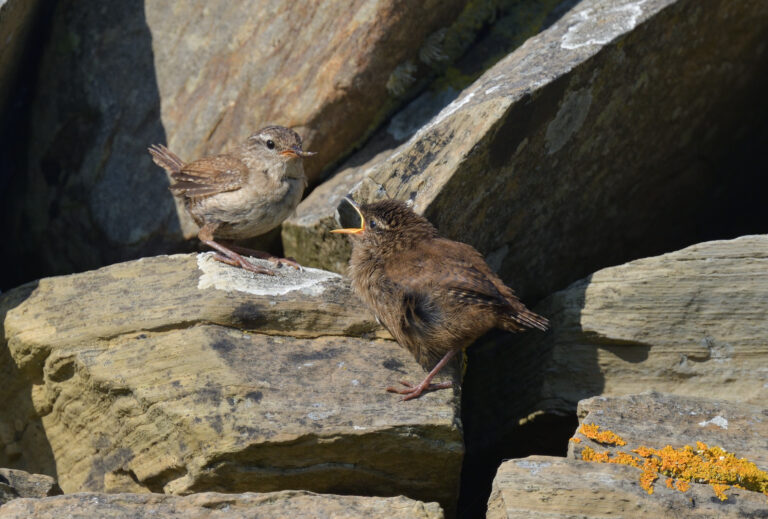
The ‘heatwave’ continues for the return ferry to Kirkwall and on the ultra-smooth crossing, we spot all the usual seabirds along with a Great Northern Diver, plus a brief glimpse of a Harbour Porpoise. After a free morning in Kirkwall to see the sights and have lunch, we head south and across Churchill Barrier Number 1 to Lamb Holm to see the ornately decorated Italian Chapel, converted from two Second World War Nissen huts by Italian POWs.

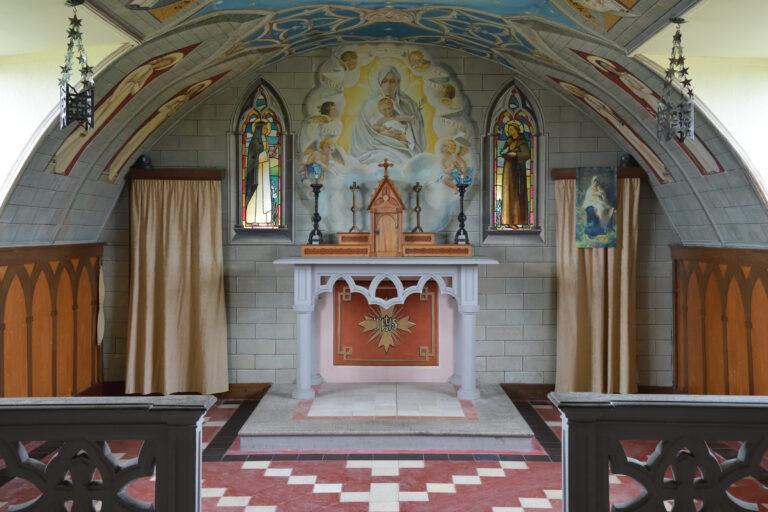
From here we continue south across two more barriers to Echnaloch Bay for a short baywatch, where a Little Tern shows really well on the shingle shore along with plenty of Arctic Terns. Further south at barrier number 4, a stroll, and for some, a paddle along the sandy beach produces views of Arctic and Sandwich Terns and plunge-diving Little Terns, plus close views of Sanderling and Ringed Plover along the water’s edge.

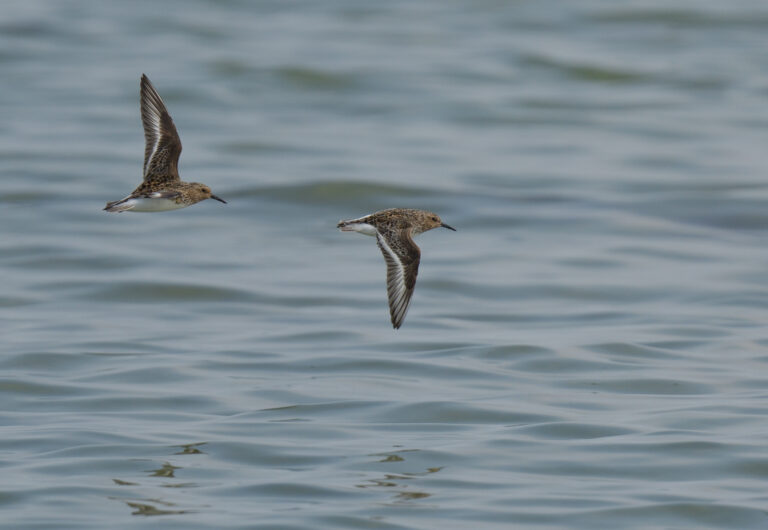
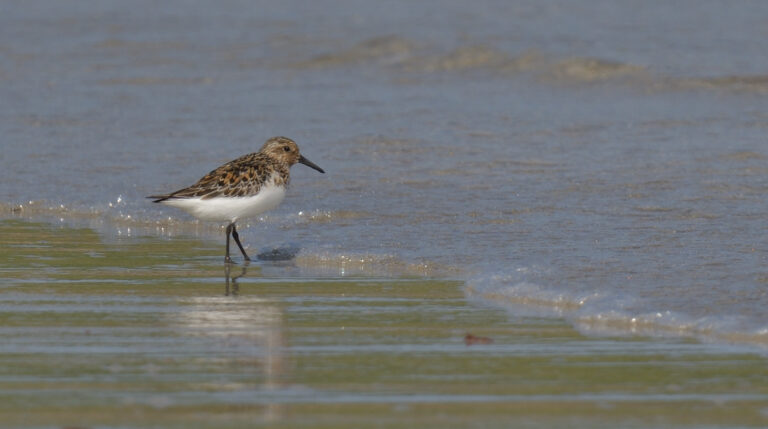
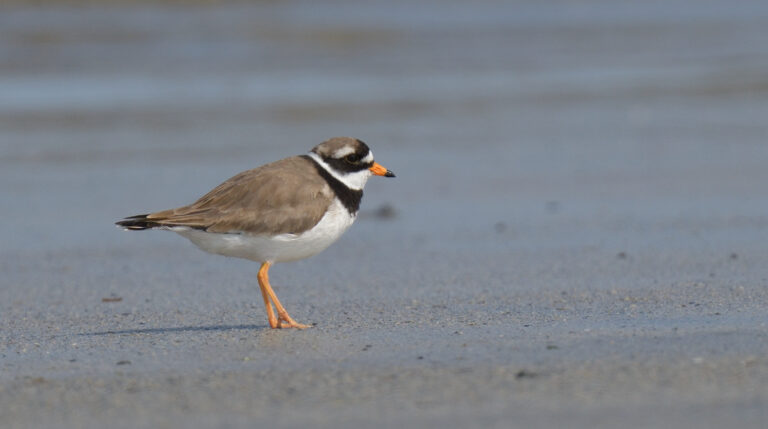
It’s cool and breezy first thing, with low cloud hanging over the hills as we head off to the nearby Cottascarth RSPB reserve, where we enjoy a tranquil stroll through the moorland amid loads of Cotton Grass and pale pink Common Spotted Orchids. Omnipresent Curlews burble away as usual, while a Sedge Warbler sings frantically from a clump of willow scrub, as well as in mid air, and we also hear at least two Cuckoos but neither shows itself. Further along the track is the spacious Balfour Hide where a stake out of the heather-clad slope soon reveals a hen Hen Harrier drifting along the top of the slope and then over the top, so we follow it out of the hide hoping for a better view. From outside the hide the hen returns on two more flights, each time dropping below the skyline, and then a sudden shrill call reminiscent of a Peregrine attracts our attention to the lower slope where we scope a super little slate grey-backed male Merlin calling from a low post! Wow, what luck. But then it gets even better as we spot a slightly larger brown-backed female Merlin sitting on another nearby post! Not long after, both hen and cock Hen Harriers appear above the ridge and as we watch, the male passes its prey to his partner. At the end of an exciting visit here, we move on as the female Hen Harrier is escorted off their patch by a pair of Kestrels.
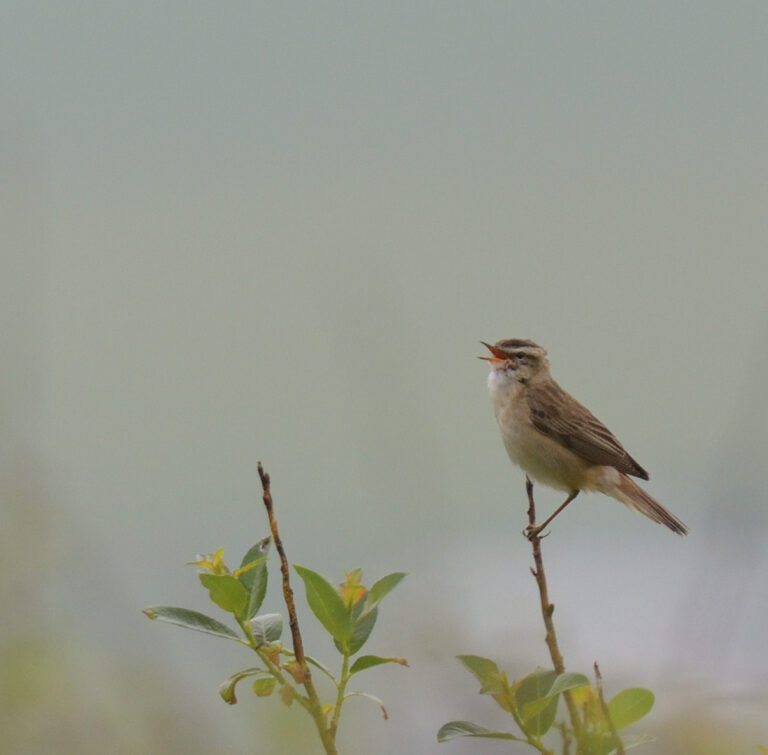
Next stop is at the nearby hide on Burgar Hill where a Red-throated Diver is new for the trip. Heading west on the B9057 across Birsay Moors, we spot a male Hen Harrier on the right, which is chased off by a plucky Golden Plover, and then we spot a female harrier hunting away to the left.
After lunch back at the hotel, a roadside stop beside the Loch of Banks produces a vagrant Great White Egret, while the nearby Loons RSPB reserve produces lovely views of a pair of Black-tailed Godwits in rusty-red breeding plumage as well as Shoveler and Tufted Duck mothers with ducklings, but the calling Water Rail is a no show.
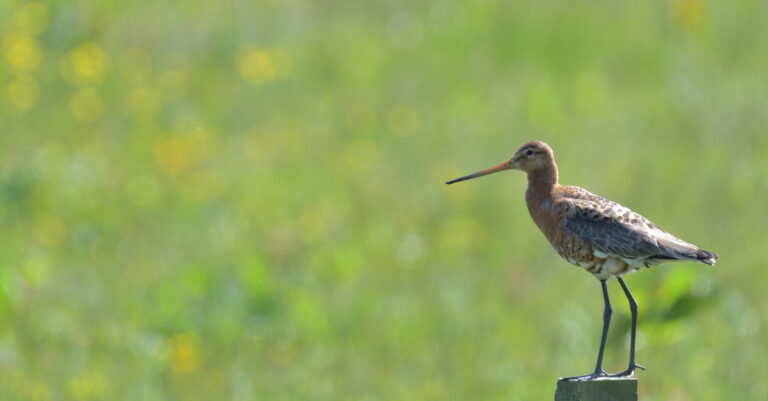
Last stop of the day is at Marwick Head where the impressive cliffs, topped with a profuse pink carpet of Thrift, are home to a ‘city’ of seabirds with ledges plastered white by Fulmars, Guillemots, Razorbills, Gannets and Kittiwakes, while the numerous baby Rabbits here include one or two mutant black and ginger forms.

This bright and breezy morning, we begin with a visit to Skara Brae, a World Heritage Site on the shore of Skaill Bay, where a ‘hamlet’ of ten Neolithic neat stone-walled houses sunken into the ground, dating back to around 3100 BC is the best preserved Neolithic settlement in Europe, where one can still see stone furniture such as beds, hearths and even cupboards! Out in the bay we spot two Great Northern Divers while an adjacent field has a flock of thirty plus Ravens! After lunch in the visitor centre here, we move on to the nearby Ring of Brodgar, a neolithic henge and UNESCO World Heritage Site in a fabulous setting on the narrow isthmus separating Lochs Harray and Stenness, with singing Skylarks and burbling Curlews all around. Little more than a mile further south along the narrow isthmus are the Stenness Standing Stones, another UNESCO World Heritage Site, and probably the oldest henge in Britain, consisting of four colossal megaliths standing up to 19 feet proud of the soil and yet erected by hand over 5000 years ago! Last stop is at Maeshowe, an amazing neolithic chambered cairn, constructed solely by hand, some 5000 years ago, from a multitude of carved stones some of which weigh up to 5 tons! How on earth did they manage to move the stones, never mind carve them and make them all fit so neatly together? Millenia later, the Vikings left their marks on the inner walls of the chamber with their own hand carved graffiti and symbolic depictions of mythical creatures. No wonder this is also a World Heritage Site.
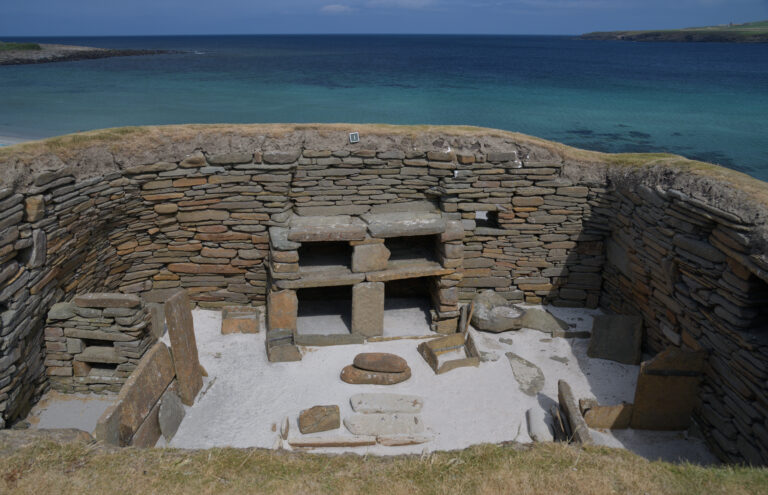
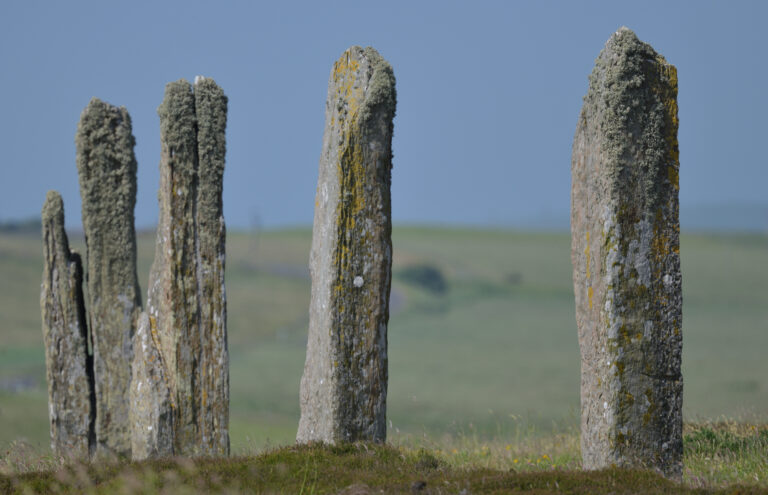
Sadly, the long-lasting record-breaking warm weather here has come to an end this morning and the sun-baked ground gets a good watering as we take a ferry ride across Scapa Flow to lonely Hoy. The inclement weather puts a dampener on our planned walk to the Old Man so we scour the southern shores of Hoy and across a short causeway to South Walls looking for Otters, but it must be too wet for them today! Consequently we make do with sightings of Eiders, Black Guillemots, Shags, a roadside Snipe and a piratical Arctic Skua chasing Sandwich Terns for their bounty. Returning to Lyness we visit the fascinating Scapa Flow Museum, for a dose of relatively recent history, compared to all the neolithic sites. Following the coast road north we pull over at a likely looking spot for Short-eared Owl etcetera, and while eating lunch by the van, a commotion in the nearby Common Gull colony attracts our attention to a sub adult White-tailed Eagle sitting on the ridge and ducking repeated swoops from the agitated gulls. Soon after lunch a male Hen Harrier flies by and further up the coast road, beside a small lochan called the Water of Hoy, we get fantastically close views of a pair of Red-throated Divers with two chicks. Continuing along the narrow road we get three more sightings of female Hen Harriers hunting beside the road on the way to the Dwarfie Stane, a huge block of rock hewn into an open entrance with two side chambers for burials, and all done by hand with stone tools some 5000 years ago! Along the path to this unique site, we find several carnivorous Round-leaved Sundews in one of the damper hollows.
It’s our last day and with Short-eared Owl still missing from the trip list we set off on a scenic route back to Kirkwall airport hoping to find this apparently elusive species. Along the drive, Buzzard and Chaffinch are new birds for the list and we spot yet another Hen Harrier but still no owls. As we approach Kirkwall from Finstown, time is running out, but just as I point out an area of moorland where I had previously seen an owl hunting, there it is again, and carrying prey as it slowly flies low across the heather. Wow, what a ‘last minute’ lucky sighting, bringing the bird tally to a total of 75 species over the week in which we packed in so much across nine islands, including three return ferry rides, two museums and six amazing archaeological sites.
